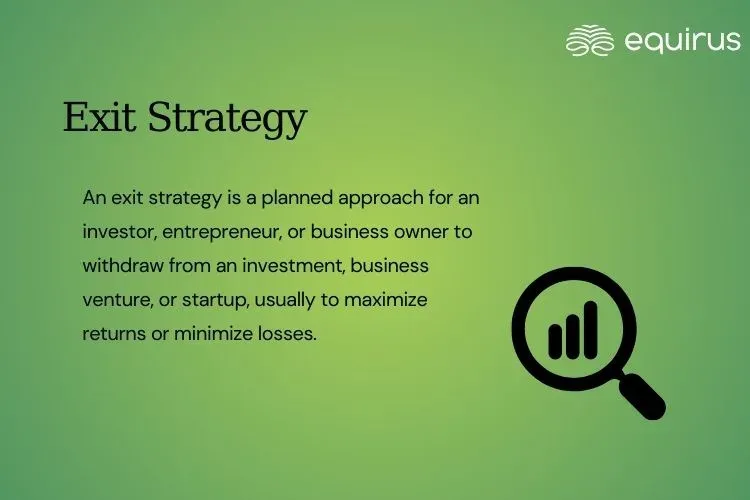Exit Strategy

Key Highlights
-
It is a planned approach for an investor, entrepreneur, or business owner to withdraw from an investment, business venture, or startup, usually to maximize returns or minimize losses.
-
Common types of exit strategies includes initial public offering (IPO), acquisition / merger, buyback, secondary sale, liquidation and management buyout (MBO).
What is Exit Strategy?
An exit strategy is a planned approach for an investor, entrepreneur, or business owner to withdraw from an investment, business venture, or startup, usually to maximize returns or minimize losses.
It outlines how and when the individual or entity plans to sell their stake or exit the business.
Why Is an Exit Strategy Important?
-
For Investors: Helps recover capital and earn returns.
-
For Entrepreneurs: Provides a roadmap for stepping away or cashing out after building a business.
-
For Stakeholders: Signals long-term planning, professionalism, and risk management.
A clear exit strategy is often a requirement from venture capitalists or private equity firms before they invest in a business.
Common Types of Exit Strategies
1. Initial Public Offering (IPO)
The company offers shares to the public for the first time. Investors can sell their shares in the open market after a lock-in period.
2. Acquisition / Merger
The business is sold to another company. This is common in the startup world, where a larger company acquires a smaller one for its technology, talent, or market share.
3. Buyback
The company’s original owners or promoters buy back shares from investors.
4. Secondary Sale
An investor sells their stake to another investor (like a private equity firm or strategic investor).
5. Liquidation
The company is shut down, and its assets are sold. This usually happens when the business is no longer viable.
6. Management Buyout (MBO)
The company’s management team purchases the business from its owners.
When Is an Exit Strategy Used?
- After a successful period of business growth.
- When investors seek returns within a specific time frame (e.g., 5–7 years).
- During mergers, acquisitions, or changes in strategic direction.
- When the founder wants to retire or move on.
Considerations When Choosing an Exit Strategy
-
Market conditions
-
Business valuation
-
Investor expectations
-
Tax implications
-
Legal and regulatory factors
-
Impact on employees and customers
